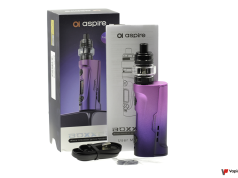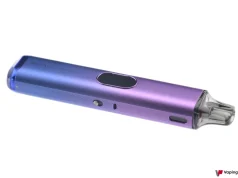The combined findings indicated that young people mostly obtain the products through older friends or others (social sourcing). The researchers highlighted that we still do not have a clear picture of how this works, especially with proxy purchasing. Some minors also buy vapes in person from vape shops and other retails stores, which still appears to be more common than buying online.
Meanwhile experts in the field have long highlighted that the most common way of illicitly obtaining such devices in places where they are banned or restricted, is the black market. In fact in places like Australia, where vape regulations are some of the harshest worldwide, teen vaping is still on the rise and the local black market keeps going from strength to strength.
Last August, a renewed panic about teen vaping was raised in the US as multiple news headlines reported that vapes disguised as school supplies, such as highlighters and USBs, were flooding in from China. Other vapes were made to look like ballpoint pens and even phones, and were available in enticing fruity flavours. To the shock of many, one disposable vape brand has been openly selling highlighter vapes. High Light Vapes website says that their flagship product makes it possible to vape “discreetly”.
Should plain packaging for vapes be considered?
A 2023 study conducted by a number of distinct researchers and experts in the fields of tobacco harm reduction and addiction, found that youngsters would be less interested in vaping products if they carried plain packaging.
Published in JAMA Network Open, the study titled, “Association of Fully Branded and Standardized e-Cigarette Packaging With Interest in Trying Products Among Youths and Adults in Great Britain,” set out to examine any possible relationship between branded and standardized vape packaging with inclination to try the products among youths and adults in Great Britain.
The compiled data indicated that standardized packaging may reduce the appeal of the products to potential young users seeking to experiment, while maintaining their appeal to adults interested in the products in order to quit smoking.
Coincidentally in the same week this study was published, it was reported that D66, a social liberal political party in the Netherlands, would be proposing such a measure. The bill aims to make vapes less attractive to teenagers and RTL Nieuws reported that it has the support of the majority in parliament.
What motivates teens to vape?
Yet, while flavour variety attracts adolescents, and marketing strategies make vaping products appealing, science indicates that teens vape for various reasons. Curiosity and experimentation are common factors, with studies suggesting that many teens try vaping due to peer influence.
Moreover behavioural studies have consistently shown that risk taking behaviour is normal within this age group, especially in certain personality types. And last but not least, a relationship between stress and nicotine consumption has also been identified. With these factors in mind THR experts urge policymakers to cater for the root causes of teen vaping and alongside the regular restrictions normally set in place, go as far back as preventing the urge to try vaping.












